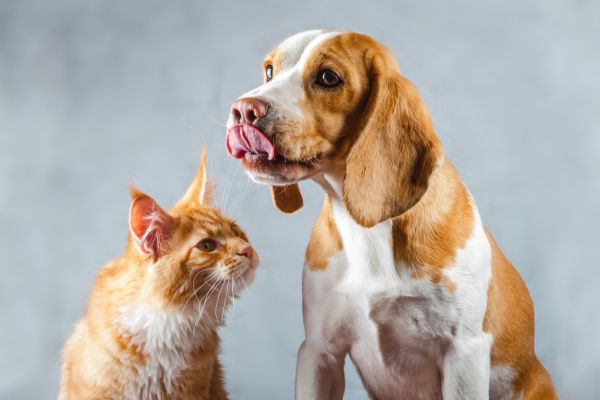 Our furry companions bring endless joy, unconditional love, and a healthy dose of cuddles to our lives.
Our furry companions bring endless joy, unconditional love, and a healthy dose of cuddles to our lives.
Unfortunately, that love often translates into overflowing treat bowls and couch potato pets.
Like their human counterparts, our canine and feline friends are battling a global weight epidemic, with consequences that extend far beyond those extra pounds.
The statistics paint a worrying picture.
According to the Association for Pet Obesity Prevention, an estimated 59.5% of dogs and 60.1% of cats in the United States are overweight or obese.
That translates to roughly 56 million overweight dogs and 58 million overweight cats. To put it in perspective, that’s roughly the combined human population of California and Texas!
Why are pets packing on the pounds?
In a nation known for its supersized portions, it’s no surprise that our four-legged friends are mirroring our own unhealthy trends.
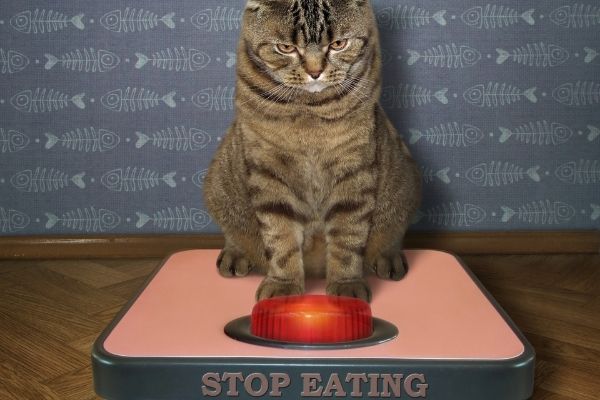
Several factors contribute to the pet obesity epidemic:
Overfeeding:
We shower our pets with love, and sometimes that translates to overflowing food bowls, frequent treats, and the “clean-plate” mentality.
Overestimating their calorie needs and neglecting portion control can lead to calorie overload (especially for pets with sedentary lifestyles), resulting in gradual weight gain.
The situation is particularly alarming for cats, as they are naturally programmed to eat small, frequent meals. When we unknowingly overfeed them, we create chubby kitties prone to a cascade of health issues.
Inappropriate diet:
Human snacks and table scraps are often loaded with unhealthy fats and sugars. While the occasional indulgence might seem harmless, it can contribute significantly to weight gain over time.
In addition to unhealthy snacks, feeding pets a diet high in fat and carbohydrates and low in protein and fiber can contribute to weight gain.
Related article:
Why Grain-Free, Boutique, and BEG Diets May Be Harming Your Pet
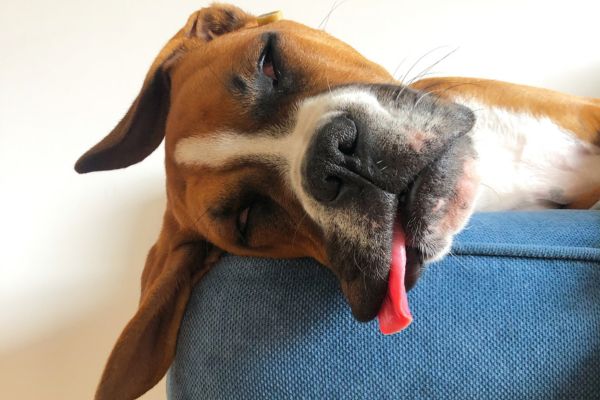
Lack of exercise:
Pets need daily physical activity to burn calories and maintain a healthy weight. But our hectic schedules, combined with our tendencies towards a sedentary lifestyle, often mean shorter walks that leave our furry friends with pent-up energy and insufficient calorie burning.
Related article:
Five Fun (and Funny) Ways to Help Your Senior Cat Exercise
Age, breed, and gender:
Some dog breeds, including Labrador Retrievers, Golden Retrievers, Beagles, Basset Hounds, Bulldogs, and Cocker Spaniels, are genetically predisposed to carrying extra pounds due to their metabolism or body type.
Maine Coons and Persian cats are more prone to feline weight gain.
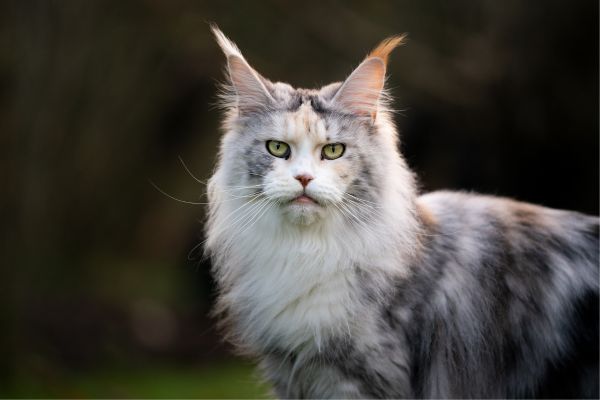
Senior pets and females tend to be more susceptible to weight gain, and spaying or neutering contributes to a slower metabolism.
Underlying medical conditions:
Certain medical conditions can contribute to weight gain, such as canine hypothyroidism, Cushing’s syndrome, and feline diabetes.
The dangers of excess weight
Fat is a biologically active tissue, and excess fat tissue can wreak havoc on a pet’s metabolism, impacting their mobility and quality of life.
Joint issues:
Carrying extra weight puts immense strain on their joints, leading to mobility issues, osteoarthritis (a painful condition affecting the joints), and hip dysplasia.
Respiratory problems:
Obesity puts stress on the respiratory system, especially in dog breeds like pugs and bulldogs.
Skin issues:
Weight gain can worsen skin conditions like dermatitis and make grooming challenging.
Diabetes:
Both dogs and cats are at increased risk of developing type 2 diabetes if they are overweight or obese.
Cardiovascular disease:
The extra strain on the heart increases the risk of heart disease, heart failure, stroke, and other cardiovascular issues.
Cancer:
Studies suggest a link between obesity and certain types of cancer in both dogs and cats.
Heatstroke:
Overweight pets are more susceptible to heatstroke.
Anesthesia complications:
Obese pets have an increased risk of anesthesia complications should they require surgery.
Shorter lifespan:
Studies show that overweight pets have a shorter lifespan than their leaner counterparts.
Summary:
Cats with excessive body weight are at significantly higher risk for developing insulin-dependent diabetes, arthritis, kidney disease, high blood pressure, and cancer.
Overweight and obese dogs also have increased risk of arthritis, diabetes, heat exhaustion, and cancer.
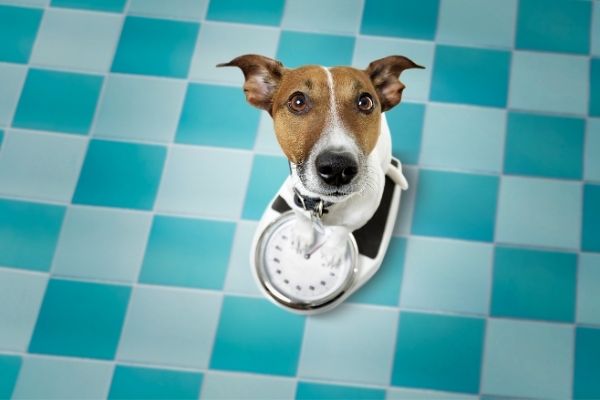
Fighting the flab: 6 weight-loss tips
The good news: pet obesity is largely preventable. Recognizing the signs of an overweight or obese pet is the first step. Look for a rounded body shape, difficulty jumping or climbing, and excessive panting.
Here are six tips to help your pet battle the bulge:
1. Consult your vet.
If you suspect your pet is carrying extra pounds, schedule a visit with us before putting your pet on a diet.
We’ll help you determine the proper number of calories, the type of diet, and the amount of exercise your pet needs each day, based on several factors:
- your pet’s weight and metabolism
- whether your pet is spayed or neutered
- your pet’s age
- typical daily activity your pet currently gets
- whether your pet is indoors or outdoors, or both
- whether your pet has any underlying medical conditions
2. Resist the temptation to treat.
You don’t want to sabotage your efforts to help your pet lose weight by “rewarding” them with sugar- and fat-laden treats.
As little as 30 extra calories per day can result in a weight gain of more than three pounds a year (kind of like humans gain weight when we inhale high-calorie drinks, donuts, and snack crackers).
While those puppy dog eyes begging for another treat might melt your heart, resist the urge to give your pet high-calorie human snacks or table scraps.
Offer praise and affection instead of extra food. Limit treats to special occasions or use them as rewards for positive behavior during training sessions.
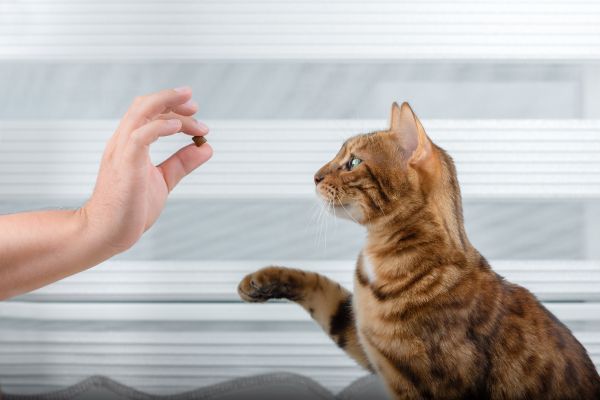
Opt for healthful, low-calorie, no-sugar alternatives:
- Dogs: small slices of apple, banana, baby carrots, broccoli, green beans
- Cats: a flake of tuna or salmon
Be aware of treat sizes. Dog treats come in three sizes: small, medium, and large. But when you feed a pocket dog three small treats, your pup may have just eaten an entire day’s worth of calories.

Chop treats into teeny-tiny pieces appropriate for your pet’s size. Your pet can’t do math – they won’t notice the size difference.
Some treats offer the added bonus of helping keep your pet’s teeth clean. Ask us to recommend healthy goodies.
3. Ditch free-for-all feeding.
Just like humans, pets don’t always know when to stop.
Studies show that feeding even 10 extra tiny kibbles per day can add up to a pound of weight gain per year in small dogs and indoor cats!
Use a measuring cup to ensure accurate portions of high-quality food. Remember: Not all pet food is created equal.
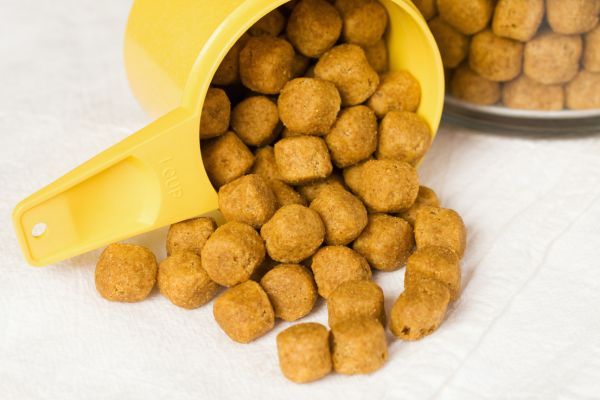
- Look for food specifically designed for weight management, which may have lower calorie and fat content.
- Pay attention to the ingredients and calorie content when choosing food. Opt for high-quality brands with real meat protein and fewer fillers.
If you’re unsure which food is best for your pet’s needs, ask us for recommendations during your consultation.
Another way to prevent overeating is to investing a feeding puzzle or slow feeder to make mealtime engaging and extend the time it takes to finish.
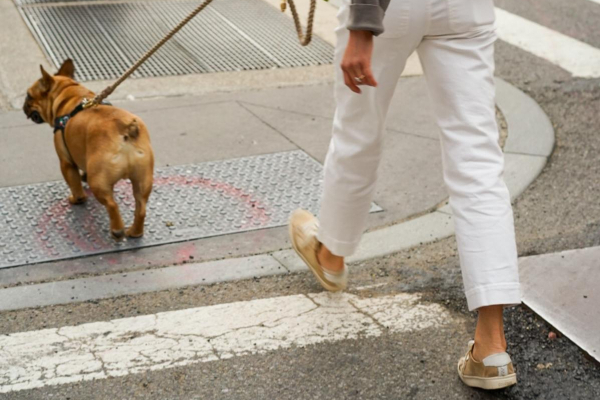
4. Get active:
Daily exercise is a must. Exercise helps regulate weight and behavior, boosts your pet’s immune function, and improves cardiovascular health.
Aim for at least 30 minutes of moderate exercise daily, tailored to your pet’s abilities.
Take your dog on a brisk walk for 20 to 30 minutes. Enjoy playful sessions in the park, play fetch, or schedule a play date with other pups.
Related article:
10 Tips for a Safe and Fun Off-Leash Dog Park Outing
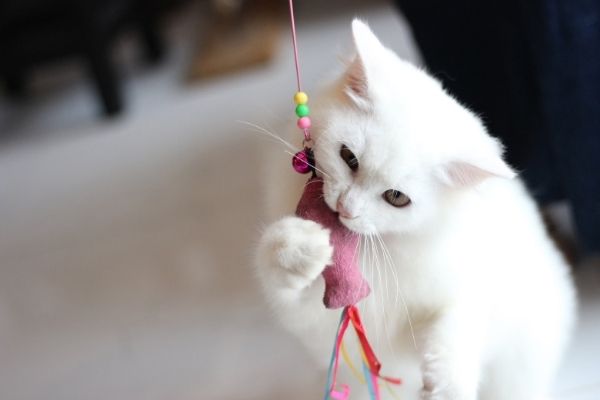
Actively play with your cat for 5 to 15 minutes per day, using a cat toy, remote-controlled battery mice, practice golf balls (the ones with holes in them), or a wad of paper.
Create an enriching indoor environment for your cat with climbing structures, scratching posts, and interactive toys to encourage them to move and play.
Related Article:
12 Environmental Enrichment Activities for Indoor Cats
Start slow and gradually increase the duration and intensity of their workouts. A tired pet is a less likely to be a bored, overeating pet.
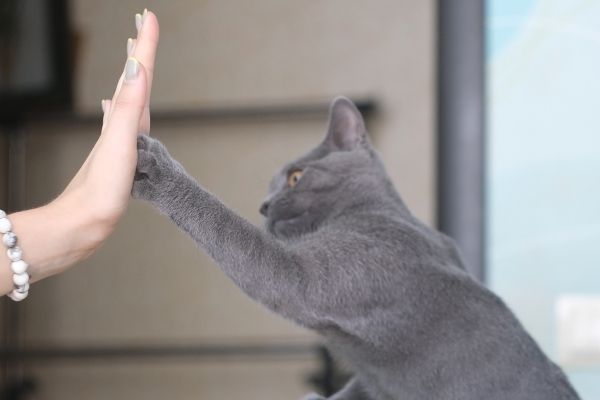
5. Track progress and celebrate success
Weight loss is a journey, not a race. Losing weight involves strategically and carefully decreasing calories (while preserving critical nutrients) and gradually increasing exercise.
Sound familiar? Yes, we humans go through the same process to lose weight!
Regularly weigh your pet and track their progress.
Be patient, consistent, and celebrate every milestone with your pet.
6. Ask for help
At Atlantic Veterinary Hospital, we have an arsenal of creative and time-proven strategies that may be helpful in your efforts to improve your pet’s weight, including what to do if some members of your family have a hard time accepting or adhering to a pet’s new health régime.
Please call us at 206-323-4433 for an appointment if you’d like to discuss your pet’s weight and set up a weight management plan.
Here’s to the health of you and your family, both human and furry.
For further reading
- Why Grain-Free, Boutique, and BEG Diets May Be Harming Your Pet
- 12 Environmental Enrichment Activities for Indoor Cats
- Five Fun (and Funny) Ways to Help Your Senior Cat Exercise
Obesity in Dogs, and How to Prevent It
When Can My Puppy Go Running With Me?
10 Tips for a Safe and Fun Off-Leash Dog Park Outing


